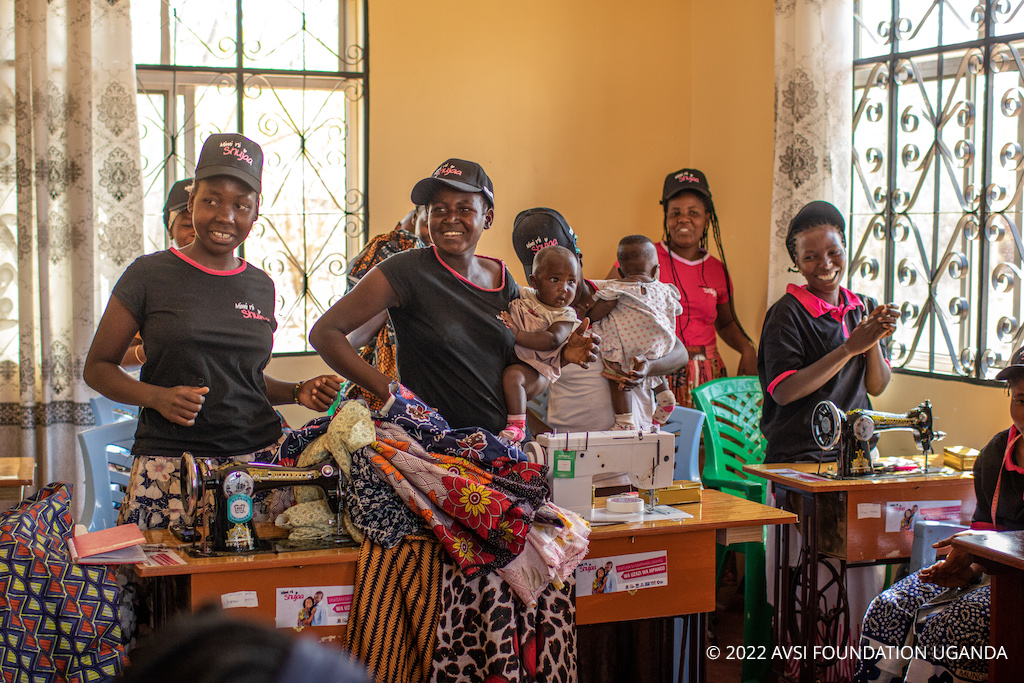Reducing HIV/AIDS Vulnerability through Income-Generating Activities
USING RESULTS
USAID is expanding and adapting an income-generating economic livelihoods program to help reduce HIV/AIDS vulnerability among adolescent girls and young women.
With support from the U.S. President’s Emergency Plan for AIDS Relief (PEPFAR), USAID is leading a multi-country public-private partnership to economically empower adolescent girls and young women to reduce their vulnerability to HIV/AIDS and is employing a proven model from an intervention in Northern Uganda to implement income-generating livelihoods programs for this vulnerable population. The programs include activities such as business and life skills training, mentorships, participation in savings and social groups, and financial assistance in launching and growing a business. These activities were evaluated in Uganda and demonstrated positive income-generating outcomes for young women.
The Challenge
Since 2010, the incidence of global HIV infections have decreased by 31 percent and AIDS-related deaths have decreased by 47 percent.[1] However, vulnerability to HIV/AIDS remains a challenge in low- and middle-income countries, particularly for adolescent girls and young women aged 15-24, who accounted for 50 percent of all new infections in 2020.[2] Evidence suggests that economic conditions contribute to HIV/AIDS vulnerability–women who are in more difficult economic situations are likely to be at greater risk of contracting HIV/AIDS. As such, policymakers have implemented programs to give these women greater opportunities to earn income and thus lower their risk of exposure to HIV/AIDS.[3]
The Evidence
From 2009 to 2012, IPA researchers evaluated AVSI Foundation’s evidence-based WINGS intervention in Northern Uganda on increasing income-generating entrepreneurship opportunities for formerly displaced young women. In this program, women received business skills training, cash grants, mentorships, and participated in a variety of social groups.
Women participating in WINGS improved their earnings and access to nonfarm business opportunities. Monthly cash earnings increased by up to 151 percent, nonfarm work hours doubled, and the likelihood of owning a nonfarm business increased by 109 percent. In addition, women experienced deeper and expanded social cohesion with their peers and increased their activity in savings and loans associations.
The Impact
Following the positive results of its intervention in Northern Uganda, AVSI modified the WINGS model to incorporate further proven income-generating activities and structures for young women, which became known as WINGS+. In 2019, USAID announced it would use the WINGS+ model alongside others to implement income-generating livelihood programs for young women and adolescent girls in the DREAMS (Determined, Resilient, Empowered, AIDS-free, Mentored, and Safe) initiative, a public-private partnership launched in 2014 by PEPFAR to reduce HIV/AIDS vulnerability among this population in sixteen countries.[4] The WINGS+ model is being deployed in Côte d’Ivoire, Haiti, Kenya, Tanzania, and Uganda with AVSI Foundation providing technical assistance to guide and adapt the design of the income-generating programs based on the local context and the capacities of implementing partners. These programs focus on building up the entrepreneurial capabilities of adolescent girls and young women and include activities such as life and business skills training to prepare them for the workforce and running an enterprise, intensive mentorships with a business-savvy family member or friend, membership in social networks and savings groups to strengthen community trust, and financial grants to launch and grow enterprises.
As of 2022, DREAMS has active WINGS+ economic livelihood strengthening programs in Kenya, Tanzania, and Uganda. Although the impacts have yet to be determined, the WINGS approach has already demonstrated success in improving income-earning opportunities for young women, bringing optimism that similar outcomes will be experienced in these programs and in turn help to reduce HIV/AIDS vulnerability.
Sources
[1,2] UNAIDS https://www.unaids.org/en/resources/fact-sheet
[3] Goodman, Michael L., Beatrice J. Selwyn, Robert O. Morgan, Linda E. Lloyd, Moses Mwongera, Stanley Gitari, and Philip H. Keiser. "Sexual behavior among young carers in the context of a Kenyan empowerment program combining cash-transfer, psychosocial support, and entrepreneurship." The Journal of Sex Research 53, no. 3 (2016): 331-345.
[4] The sixteen countries where DREAMS operates are Botswana, Côte d’Ivoire, eSwatini, Kenya, Lesotho, Malawi, Mozambique, Namibia, Rwanda, South Sudan, South Africa, Tanzania, Uganda, Zambia, Zimbabwe, and Haiti.
Gorgens, M., Longosz, A.F., Ketende, S. et al. Evaluating the effectiveness of incentives to improve HIV prevention outcomes for young females in Eswatini: Sitakhela Likusasa impact evaluation protocol and baseline results. BMC Public Health 20, 1591 (2020).













